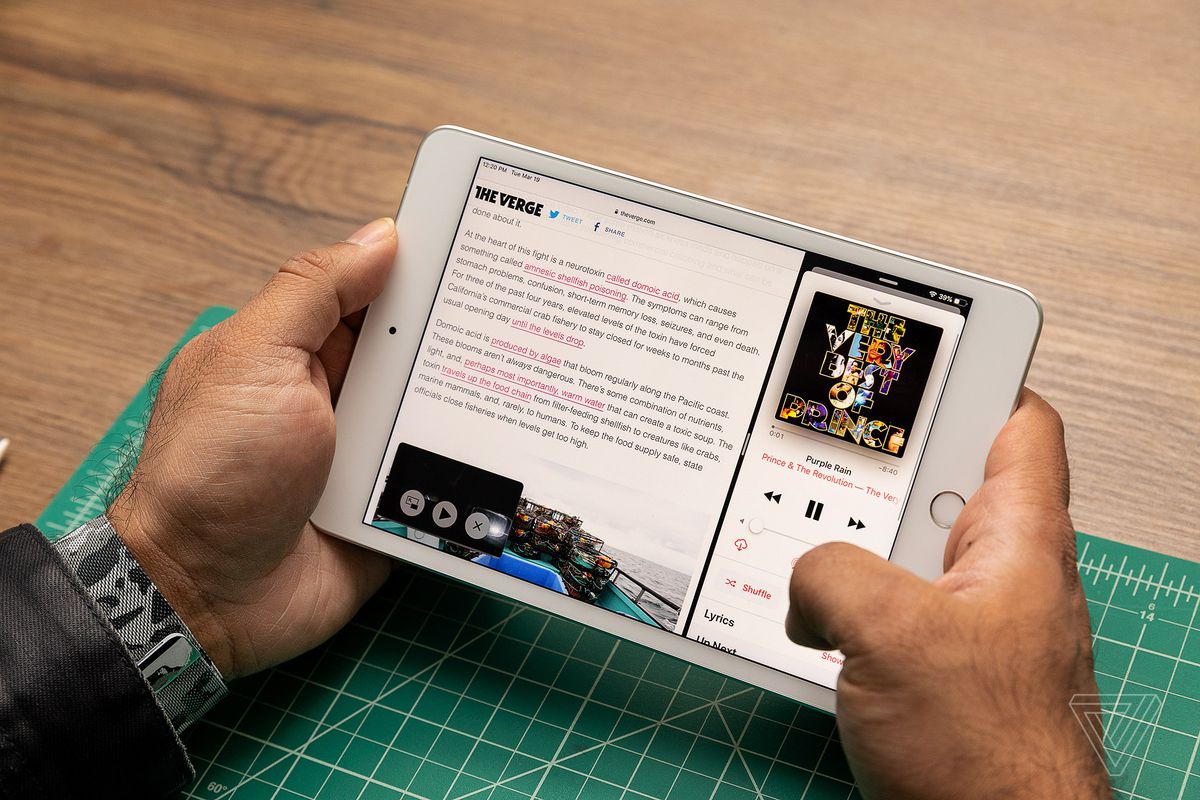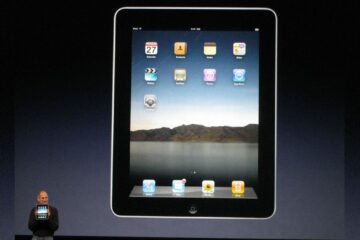/cdn.vox-cdn.com/uploads/chorus_image/image/63822911/akrales_190319_3298_0061.0.jpg)
Apple’s decision to upgrade the iPad mini for the first time since 2015 was surprising for a product line that many had assumed was dead. Conventional wisdom states that smaller tablets have died out as phone screens continue to grow in size. But having just returned from a two-week trip around Europe where I used the 2019 mini as my only computer, my only question is: what took Apple so long? It’s a wonderful product without parallel.
The iPad mini is the perfect vacation computer. My trip involved a lot of low-cost carrier flights with strict baggage limits, so I was traveling super light, and I always appreciated the minimal impact. I never regretted carrying the iPad mini around with me, even though I had a giant phone in my pocket.
I use an iPhone XS Max, which itself has one of the biggest screens you can get on a phone, at 6.5 inches. That doesn’t sound that much smaller than the iPad mini’s 7.9-inch display on paper, but the two devices just aren’t comparable. The iPad mini has a 4:3 aspect ratio, which makes it much wider in portrait orientation, and it has roughly twice the overall surface area. Apps use full iPad layouts, so they benefit from multiple columns and pop-overs, while the iPad version of iOS gives you access to proper multitasking when you need it.
What did I do with the iPad mini? Well, iPad things. It’s the best iPad by far for reading ebooks since you can comfortably hold it in one hand. It’s the worst iPad for watching video, conversely, but it’s still big enough to share for Netflix with a partner in a way that an iPhone just isn’t. It’s much better than even the biggest of phones for web browsing, catching up on news apps, looking up restaurants on Google Maps, and editing photos. It also has much better battery life.
I already knew I liked the iPad mini form factor. I bought the original model in 2012 and used the heck out of it until I sold it a year later in anticipation of an upgrade. But I never actually made that upgrade. Every iPad mini since came with compromises, particularly around the display, that stopped me from going through with the purchase each time.
The first model, of course, had a low-resolution screen. The iPad mini 2 added a Retina display, but the panel’s color reproduction was poor next to the same year’s iPad Air. The mini 3 was a non-event of an upgrade that added nothing but Touch ID. And while the mini 4 had a better color gamut and a laminated screen, its processor was a year out of date the moment it hit shelves. I’d already moved on to the prettier and more powerful iPad Air 2 and forgot all about the mini until this year.
:no_upscale()/cdn.vox-cdn.com/uploads/chorus_asset/file/15974614/akrales_190318_3298_0088.jpg)
In 2019, I have to admit that the iPad mini does look pretty retro. The design hasn’t changed at all beyond a new gold finish and some matte chamfered edges, and the mobile industry’s recent bezel-killing trends haven’t done it any favors. This is definitely one of those Apple products that was thrown together from a bunch of existing parts.
The good news is that Apple chose some really great parts. In particular, the new iPad mini screen is fantastic. It’s one of those classically awesome Apple LCDs with faultless colors and viewing angles; Apple also threw in features like Pencil support and True Tone, the latter of which I really wouldn’t want to be without at this point. Since the resolution is the same as the regular 9.7-inch iPad shrunk down to 7.9 inches, this is actually the sharpest, most pixel-dense screen in the iPad lineup, though you’ll probably be holding it closer to your eyes than the larger models.
The A12 processor is another important inclusion. Most iPad minis have shipped with chips a year out of date or more, and the $329 9.7-inch iPad is already two generations behind, but the new mini’s A12 is the same chip you’ll find in the current iPhone XS. Its performance is phenomenal, and I feel like there’s enough headroom in this little tablet to last another several-year stretch of Apple forgetting it exists.
I don’t want to give Apple too much credit for the new iPad mini. Even though the update was long overdue, it evidently isn’t a product that has had a ton of work put into it, and in some ways, it still sits awkwardly in the lineup. Why doesn’t it use the newer Apple Pencil, for example? Because that would have required a new chassis design. Why didn’t it get a new chassis design? Possibly because some business customers would want a drop-in replacement for their aging fleet of iPad minis, but probably also because Apple doesn’t really think it’s worth the effort.
None of that changes the fact that the 2019 iPad mini is a fantastic product that I would recommend to anyone. I might have preferred a more ambitious redesign, sure, but what’s here is hard to criticize. It’s never less than a delight to use, it’s the only good product in its category, and it’s earned a permanent spot in my tote bag.
[“source=theverge”]



